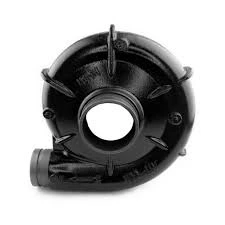Mobile:+86-311-808-126-83
Email:info@ydcastings.com
Comparing Stainless Steel and Cast Iron for Durability and Performance in Cooking Applications
Stainless Steel vs. Cast Iron A Comparative Analysis
When it comes to selecting materials for cookware or certain industrial applications, two of the most prominent contenders are stainless steel and cast iron. Each has its unique characteristics, advantages, and disadvantages that come into play depending on the intended use. This article will delve into the properties, benefits, and potential drawbacks of both stainless steel and cast iron, allowing consumers to make an informed decision.
Properties
Stainless Steel is an alloy composed primarily of iron, along with chromium and sometimes other elements like nickel. The addition of chromium gives stainless steel its corrosion-resistant properties, making it durable and suitable for various environments. It can withstand high temperatures without warping, which is essential for cooking and industrial applications. Stainless steel is also non-reactive, meaning it won’t impart metallic flavors to food, making it an excellent choice for cooking.
Cast Iron, on the other hand, is made from iron that has been melted and poured into molds to form its shape. It’s renowned for its ability to retain heat and distribute it evenly, making it an excellent choice for frying, baking, and slow-cooking. Cast iron cookware is often seasoned with oil, creating a natural non-stick surface and improving its resistance to rust.
Advantages of Stainless Steel
1. Durability Stainless steel is highly resistant to scratches and dents. It can endure the rigors of everyday use without losing its appearance.
2. Corrosion Resistance The presence of chromium prevents rusting and staining, making stainless steel ideal for kitchen environments.
3. Maintenance Stainless steel cookware is often dishwasher-safe and easy to clean, requiring minimal maintenance.
4. Weight Generally, stainless steel cookware is lighter than cast iron, making it easier to handle, especially when filled with food.
Advantages of Cast Iron
stainless steel vs cast iron

1. Heat Retention and Distribution Cast iron retains heat exceptionally well, allowing for even cooking and browning.
2. Natural Non-Stick Surface With proper seasoning, cast iron can develop a natural non-stick surface that enhances the flavor of foods.
3. Cooking Versatility Cast iron cookware can be used in the oven, on the stovetop, or even over an open flame, making it perfect for various cooking methods.
4. Longevity When cared for properly, cast iron cookware can last a lifetime and even be passed down through generations.
5. Aesthetic Appeal Many people appreciate the rustic aesthetic of cast iron cookware, which can double as serving dishes.
Disadvantages
While both materials have their benefits, they also come with drawbacks.
Stainless Steel can be prone to hot spots if not made with a thick base. It may also be more expensive compared to cast iron cookware. Furthermore, some stainless steel varieties may react with acidic foods, although this is generally less of a concern with higher-grade stainless steel.
Cast Iron, while excellent for heat retention, is quite heavy and can be cumbersome to handle, especially when full. It requires regular maintenance to prevent rust and maintain its seasoning. Additionally, cast iron cookware is not dishwasher-safe and cannot be soaked in water for extended periods.
Conclusion
In conclusion, both stainless steel and cast iron have their unique advantages and disadvantages. Stainless steel is valued for its durability, maintenance ease, and corrosion resistance, while cast iron shines in terms of heat retention and the unique cooking experience it offers. Choosing between the two ultimately comes down to personal preference and specific cooking needs. Whether opting for the sleek sophistication of stainless steel or the nostalgic charm of cast iron, both materials can play significant roles in culinary endeavors.
-
Why Should You Invest in Superior Pump Castings for Your Equipment?NewsJun.09,2025
-
Unlock Performance Potential with Stainless Impellers and Aluminum End CapsNewsJun.09,2025
-
Revolutionize Your Machinery with Superior Cast Iron and Aluminum ComponentsNewsJun.09,2025
-
Revolutionize Fluid Dynamics with Premium Pump ComponentsNewsJun.09,2025
-
Optimizing Industrial Systems with Essential Valve ComponentsNewsJun.09,2025
-
Elevate Grid Efficiency with High-Precision Power CastingsNewsJun.09,2025











